The Seven Most Unique Furniture Pieces at the Smithsonian
Sep 29th 2022
The Smithsonian American Art Museum houses a stunning collection of furniture that goes beyond functionality, showcasing pieces that are considered fine art. From Pepón Osorio’s eclectic "El Chandelier" to Wendell Castle’s ingenious "Ghost Clock," these works exemplify creativity, craftsmanship, and cultural significance. Each piece tells a unique story, blending history, artistry, and practicality. Explore how these iconic furniture designs capture the essence of handcrafted artistry, inspiring collectors and creators alike.
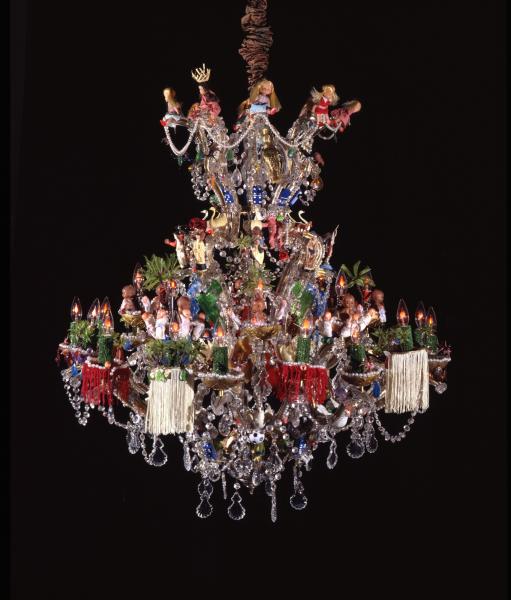
El Chandelier (1988) by Pepon Osorio
This eclectic chandelier combines traditional metal and glass with an array of toys, dolls, figurines, and everyday objects. The piece was inspired by Osorio’s experience as a social worker, observing ornate light fixtures in the modest homes of marginalized communities. The chandelier is a tribute to resilience and cultural identity, representing the way people bring beauty into their lives despite adversity. Osorio’s use of nontraditional materials adds to the chandelier’s emotional and social commentary, making it a standout work of art.
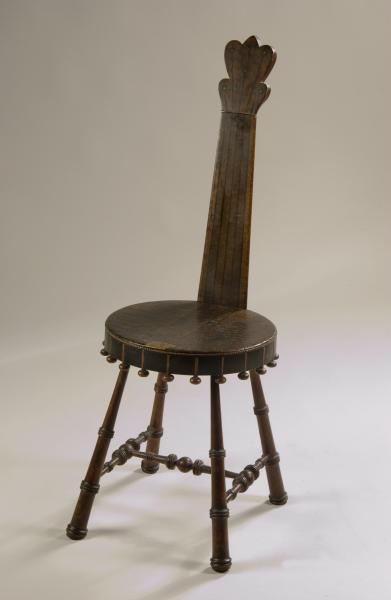
Banjo Chair (1875)
Likely created for minstrel shows, this banjo-themed chair hails from the late 19th century. Minstrel shows, though a controversial part of American history, celebrated instruments like the banjo, which were integral to the music of that era. The chair is an example of functional furniture with an artistic twist, used as a stage prop that showcased both music and performance. Despite its origins, it now stands as a cultural artifact of an era that has shaped modern American music.
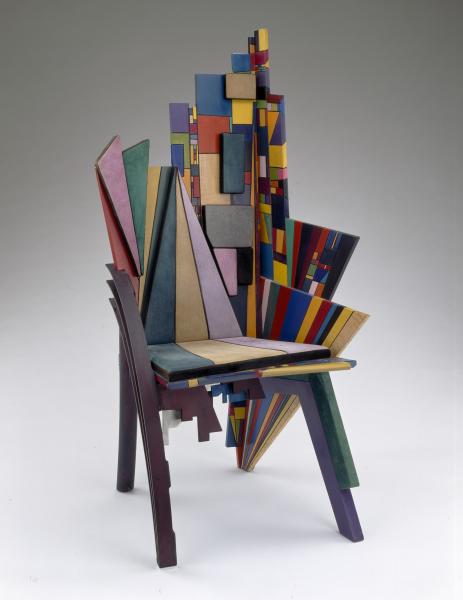
Bright City (1987) by Jay Sanger
Jay Stanger’s Bright City chair is an aluminum structure painted with vibrant acrylics. It reflects both the chaotic energy and the modern beauty of urban life. Inspired by abstract and geometric art, the piece blends industrial materials with bold colors, representing the ever-evolving nature of cityscapes. It challenges the conventional notion of what a chair should be, prioritizing aesthetic impact over comfort. Stanger’s work encourages viewers to consider furniture as an art form that can evoke emotion and push creative boundaries.
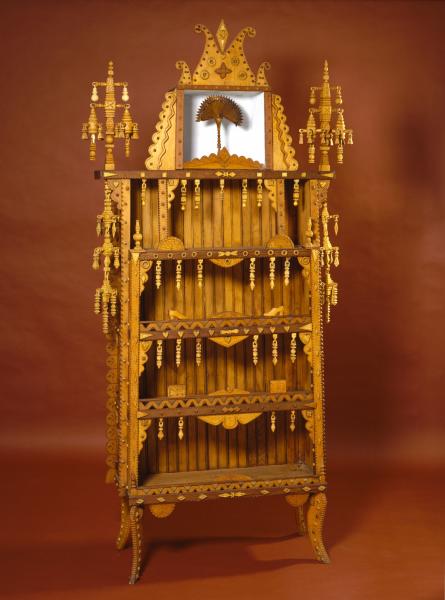
Whatnot Cabinet (1987) by George Farris
Crafted by George Farris, this ornate wooden cabinet exemplifies traditional craftsmanship with an artistic twist. The cabinet is decorated with intricate patterns and painted details, making it more of a display piece than simple storage. In Victorian times, whatnot cabinets were used to showcase trinkets and curiosities, and Farris has revived this tradition by giving his cabinet a contemporary flair. The intricate detailing and bold patterns create a striking piece that serves as both functional furniture and a testament to artistic ingenuity.
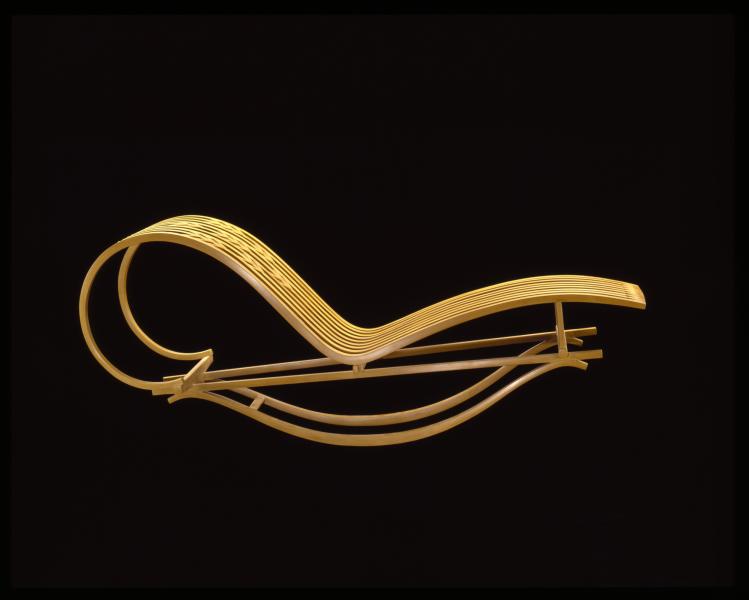
Rocking Chaise (1989) by Michael Hurwitz
Hurwitz's Rocking Chaise combines the concept of a chaise lounge and a rocking chair, resulting in a sleek, modern design that reimagines comfort. Made of wood and steel, the piece embodies Hurwitz’s innovative approach to furniture design, blending natural materials with contemporary aesthetics. The chair challenges traditional notions of how furniture is used, adding both comfort and versatility to its artistic appeal. It’s a striking example of how furniture can be both modern and timeless.
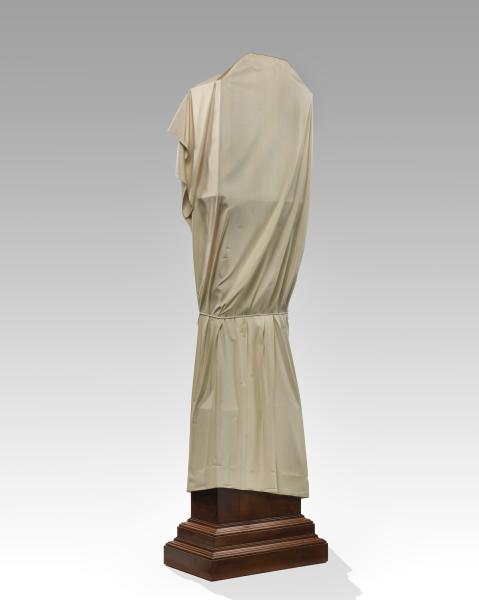
Ghost Clock (1985) by Wendell Castle
Wendell Castle’s Ghost Clock is one of the most intriguing pieces on display. At first glance, it appears to be a grandfather clock covered in a white sheet, but upon closer inspection, you realize that the entire piece is carved from a single piece of mahogany wood. Castle was known for playing with perception in his work, and the Ghost Clock is a perfect example of his ability to deceive the eye. The sheet-like drape over the clock is an illusion, making this a masterful work of art and craftsmanship.
Uncle Rick’s Wonderland (1997) by Richard Ford
This vibrant, eccentric vanity is straight out of a fairytale, with bright colors and whimsical shapes that make it appear like something from a dream world. Created by Richard Ford, the vanity is carved and painted to have an almost surreal quality, much like the exaggerated proportions and bold designs in children’s stories like Alice in Wonderland. This eye-catching piece exemplifies Ford’s playful approach to furniture-making, where form and function come together to create a piece that is both practical and enchanting.
At Penny Mustard, we take pride in offering custom furniture crafted by local artisans, blending functionality and aesthetic appeal with the kind of care and craftsmanship that can transform a piece of furniture into a lasting work of art. These Smithsonian pieces serve as an inspiration for the unique, long-lasting, and beautiful furniture that we strive to create. Who knows—maybe one day, one of our creations will join the ranks of these iconic works of art!Read the Penny Mustard story, get tips from our specialists, and find your next favorite heirloom when you sign up for our newsletter.












